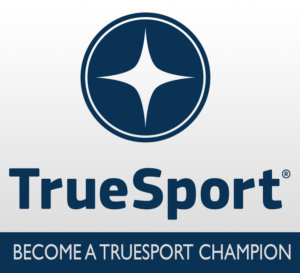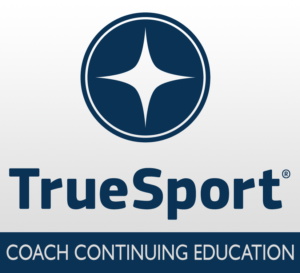5 Simple Ways to Tackle Vitamin D Deficiency with Food
USA Cheer has partnered with TrueSport, to provide new educational tools to equip coaches, parents and young athletes with the resources to build life skills and core values for success in sports and in life. TrueSport, a movement by the U.S. Anti-Doping Agency, inspires athletes, coaches, parents, and administrators to change the culture of youth sport through active engagement and thoughtful curriculum based on cornerstone lessons of sportsmanship, character-building, and clean and healthy performance, while also creating leaders across communities through sport.
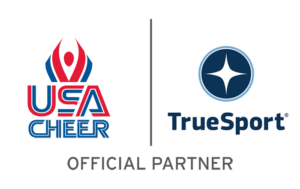
5 Simple Ways to Tackle Vitamin D Deficiency with Food

TrueSport Expert Kristen Ziesmer
Multiple studies have found that most people are deficient in vitamin D, one of the essential vitamins that everyone—but especially athletes—need in order to function at their best. Athletes are even more at risk because a low level of vitamin D can be disastrous for bone health and injury recovery. And vitamin D not only protects bones by helping the body absorb calcium, it’s critically important for good immune health.
Sometimes called the sunlight vitamin, vitamin D can be absorbed in the skin through sun exposure. But athletes in northern climates will often struggle to get enough sunlight in winter months, and indoor athletes may miss out on sunlight year-round. Here, TrueSport Expert Kristen Ziesmer, a registered dietitian and board-certified specialist in sports dietetics, shares a few easy ways to get enough vitamin D without resorting to supplements.
Get some sun
The simplest way to increase vitamin D levels is through sun exposure, says Ziesmer. A little goes a long way, though. Even when using SPF designed to filter out the UVB rays that help the body produce vitamin D, you’ll still be exposed to low amounts of UVB rays—so don’t skip sunscreen for the sake of getting vitamin D! Just ensure that you’re spending 30 minutes each day in the sunshine during the hours of 10 a.m. and 2 p.m. during the warm months. However, if you don’t have a lot of sunshine where you are, do not substitute a tanning bed to get sun exposure! Instead, focus on adding more vitamin D-rich foods to your diet.
Add vitamin D-rich foods
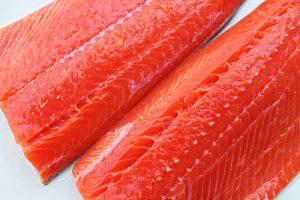 Getting vitamin D from the sun is far better and more efficient than from food. However, it is possible to get enough vitamin D from food with proper planning.
Getting vitamin D from the sun is far better and more efficient than from food. However, it is possible to get enough vitamin D from food with proper planning.
Vitamin D is available in a variety of foods and the general recommended intake is roughly 600 IUs per day for young adults. A quick word about using fish for vitamin D: The vitamin D a salmon contains can, unfortunately, vary wildly depending on how the fish was raised or where it was caught, so while eating fatty fish is a great way to get vitamin D, adding other foods rich in the vitamin will help ensure that you’re getting enough.
Ziesmer’s favorite foods rich in vitamin D include:
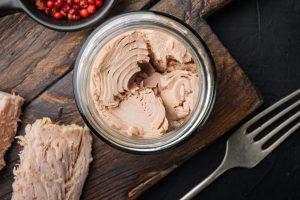 Fatty fish: Salmon and trout are both typically high in vitamin D (opt for wild caught when possible, and sockeye salmon contains more than other salmon varieties), and a single serving nets you nearly 600 IUs
Fatty fish: Salmon and trout are both typically high in vitamin D (opt for wild caught when possible, and sockeye salmon contains more than other salmon varieties), and a single serving nets you nearly 600 IUs- Canned tuna or sardines: While these won’t contain as much vitamin D as fattier fish, they will still contain between 45 and 100 IUs
- Liver: Adding a small amount of beef liver in with ground beef or in a stew can boost your vitamin D intake by roughly 45 IUs per serving
- Eggs: A single egg provides 44 IUs of vitamin D, though Ziesmer recommends free range eggs if possible
- Mushrooms: Interestingly, mushrooms are the only non-animal natural source of vitamin D, but only if they’ve properly been exposed to UV light. Look on the package to see if the mushrooms you’re buying have been exposed to UV light. Dried shiitake mushrooms are Ziesmer’s top pick for vitamin D-rich fungi. Just toss some in a soup for an easy way to include them in your diet!
Look for fortified foods
Cereal, orange juice, and many dairy and vegan dairy-substitute products now come fortified with 40 to 160 IUs of vitamin D per serving—and those are great options, especially for picky eaters who hate fish, or for vegan athletes who eschew meat and dairy. If you’re wondering why orange juice, cereal, or yogurt that’s been fortified with vitamin D is preferable to taking a vitamin D supplement, the answer is simple: Because foods are tightly regulated, while supplements are not. “Fortified foods need to go through the USDA before making it to the shelf, which means that they’re tightly regulated compared to supplements that don’t have pre-market regulation,” explains Ziesmer.
Focus on vitamin D for breakfast
 You might have noticed that the list of vitamin D-fortified foods primarily revolves around breakfast, and eggs are also a great source. While there’s no ‘best time’ to eat foods rich in vitamin D, Ziesmer says that breakfast tends to be the easiest time of day to ensure you’re getting enough vitamin D. And because fortified foods are more precise with their vitamin D content, you’ll also know how much you’re getting.
You might have noticed that the list of vitamin D-fortified foods primarily revolves around breakfast, and eggs are also a great source. While there’s no ‘best time’ to eat foods rich in vitamin D, Ziesmer says that breakfast tends to be the easiest time of day to ensure you’re getting enough vitamin D. And because fortified foods are more precise with their vitamin D content, you’ll also know how much you’re getting.
Get checked
Common side effects of vitamin D deficiency include bone pain or tenderness, dental deformities, impaired growth, increased bone fractures, muscle cramps, short stature, and skeletal deformities such as rickets. It’s also worth noting that the American Academy of Pediatrics has reported that rickets is on the rise.
While it’s safe to say you should increase your intake of vitamin D-rich foods and ensure that you see the sun most days (if possible), Ziesmer also recommends getting your vitamin D levels checked during routine physicals. According to Ziesmer, a healthy range of vitamin D is 20-50 ng/mL. Under 20 ng/mL is considered low and under 12 ng/mL is considered deficient. If you are deficient in vitamin D, a doctor may prescribe or recommend a supplement (consider asking for a third-party certified version), but don’t supplement unless it’s recommended.
Takeaway
Unlike supplements, foods containing vitamin D offer a wide range of other nutrients and benefits, and in most cases, young athletes can get all the vitamin D they need from food and small doses of sun exposure.
What is TrueSport?
The TrueSport Champion Network is a community of coaches, parents, program directors, and athletes who believe in the power of youth sport to build life skills and core values for success both on and off the field. Join TrueSport Champion Network to help promote the positive values of cheer, dance, and STUNT!
The TrueSport Coaching Education Program empowers coaches—the most significant influencers in young athletes’ lives—with a transformative learning opportunity to obtain the knowledge and resources to cultivate, champion, and uphold the rich promise and highest potential of sport.
Additional Training Modules from TrueSport
USA Cheer is proud to partner with USADA’s TrueSport® to bring relevant educational content to the Cheer and STUNT community in order to promote a positive youth sport experience. We are excited to provide access to TrueSport’s experts that take coaching beyond skills and help truly develop the overall athlete by building life skills and core values for success on and off the mat, sideline, field, and court.
Feel free to share these resources with your coaching staff, parents, or athletes!
About TrueSport
TrueSport®, a movement powered by the experience and values of the U.S. Anti-Doping Agency, champions the positive values and life lessons learned through youth sport. TrueSport inspires athletes, coaches, parents, and administrators to change the culture of youth sport through active engagement and thoughtful curriculum based on cornerstone lessons of sportsmanship, character-building, and clean and healthy performance, while also creating leaders across communities through sport.
For more expert-driven articles and materials, visit TrueSport’s comprehensive library of resources.
This content was reproduced in partnership with TrueSport. Any content copied or reproduced without TrueSport and the U.S. Anti-Doping Agency’s express written permission would be in violation of our copyright, and subject to legal recourse. To learn more or request permission to reproduce content, click here.


